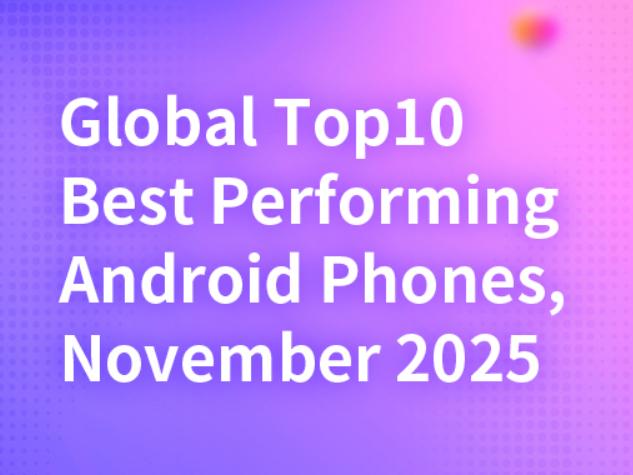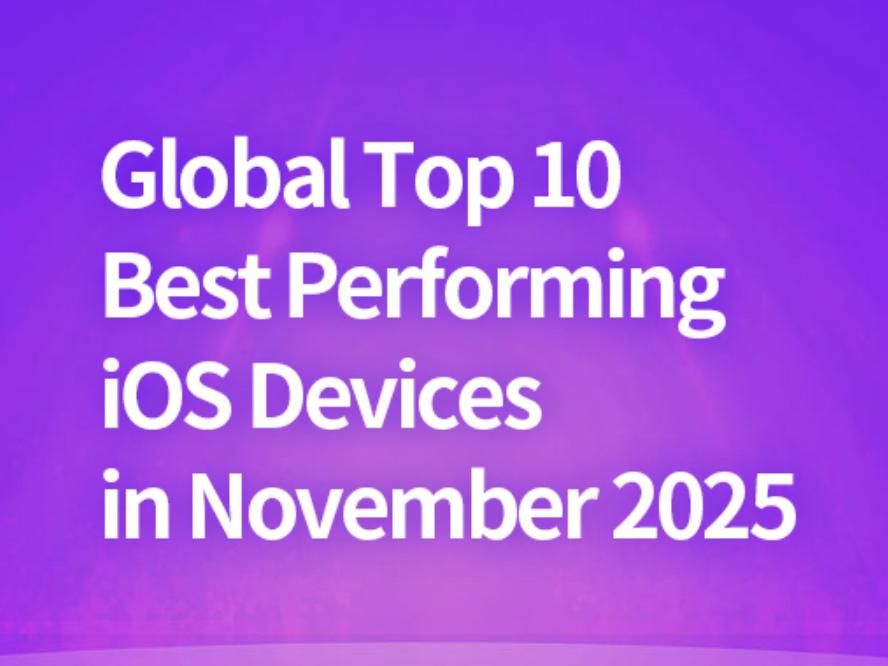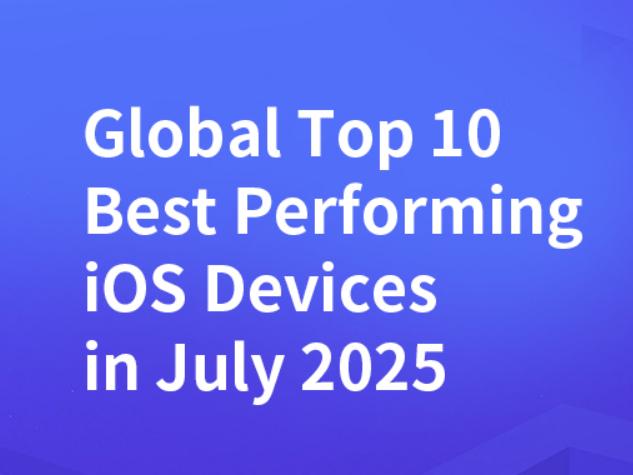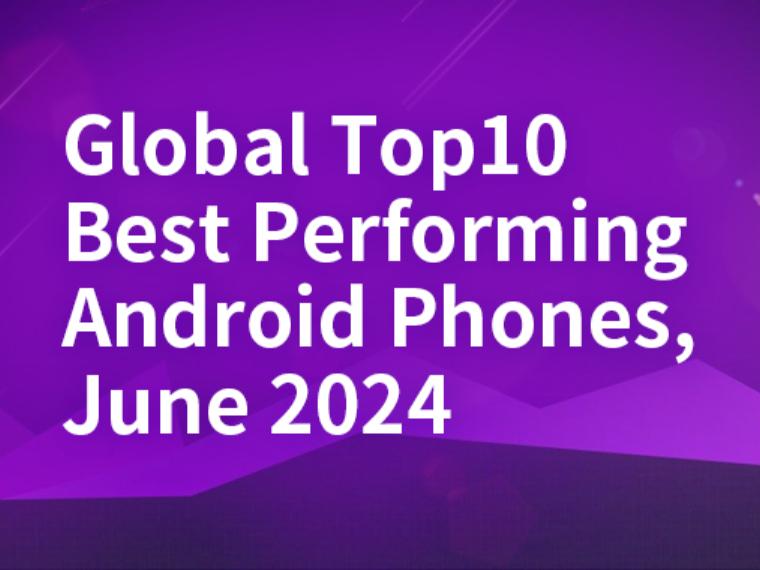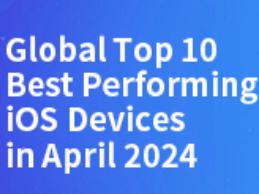AnTuTu Chinese Mobile Phone User Preferences, Q3 2019
Today Antutu released thepreferences of Chinese mobile phone users in Q3 of 2019 based on data collectedfrom Antutu database.
It should be noted thatthis preferences list is prepared based on the phone configuration of the usersof Antutu and thus it does not represent the preferences of the overall Androidmarket.
ScreenSize: Small Screen Almost Disappeared
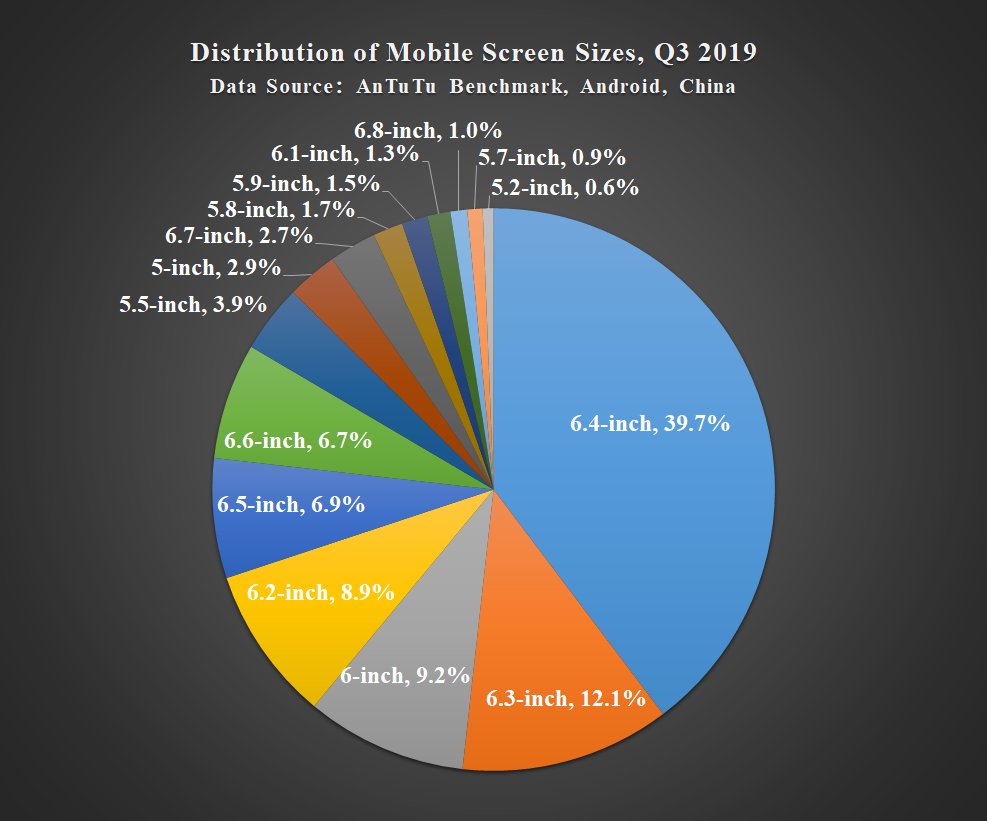
Although many usershave expressed their desires for a small-screen flagship product on socialmedia, small screens below 5 inches are almost on the verge of extinction whilescreens of 6 inches or more are now the mainstream, according to Antutu'sstatistics.
With the development ofthe full screen, the ever-increasing screen aspect ratio allows the device toincrease significantly in size without changing the width. Therefore, 6.4-inchscreen accounts for 39.7%, according to Antutu's statistics. Adding the additional6.3-inch screen (12.1%) and 6-inch screen (9.2%), screens of 6 inches or moreare dominating the market, with a total percentage of more than 50%.
Antutu's Take: withtoday's technology, such dimension has reached the limit of one-handedoperation. Besides, manufacturers also prefer screens of 6 to 6.4 inches. So,the result is within our expectation.
However, consideringthat the 5G features have a high demand for batteries, the easiest way for phonemakers to increase the battery capacity at current stage is to increase thedevice dimension and use a larger screen. In this way, Antutu believes that thephone screen will continue to increase in the near future and more productswith a bendable screen or “surround screen” will emerge.
Screen Resolution:Still 1080P
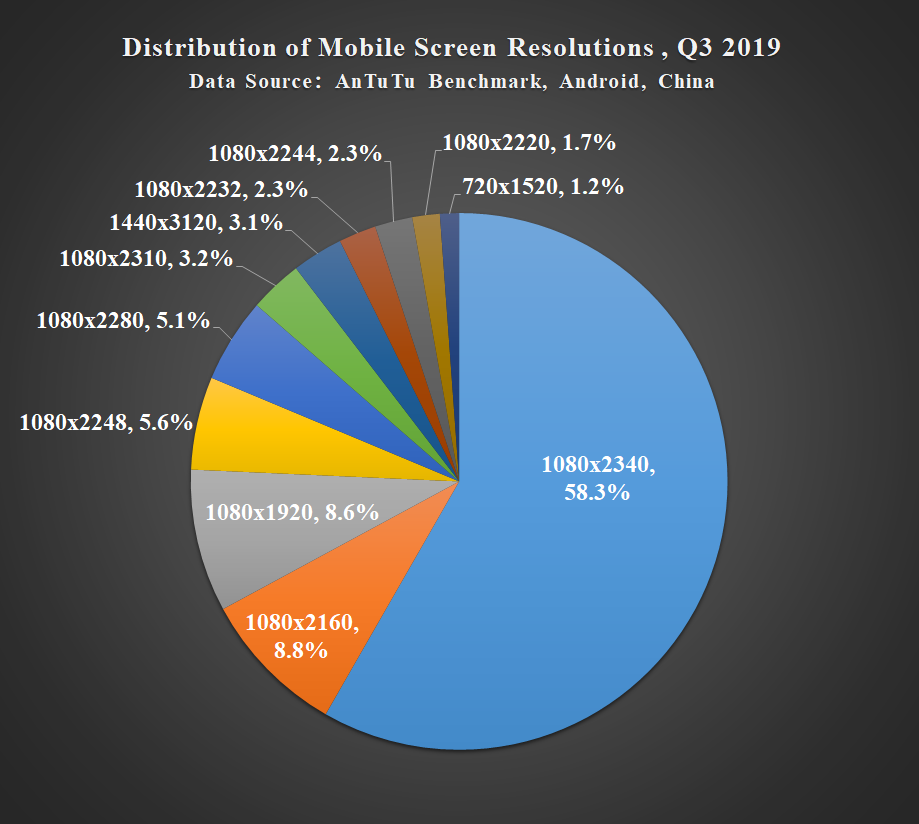
Is 2K display good? Userswho have experienced it would definitely say yes. However, few manufacturers willchoose this kind of screen.
Currently, in terms ofresolution, 1080P is still dominating, with 2340x1080 resolution alone accountingfor 58.3% , according to Antutu's statistics.
The only 2K-levelresolution making its way on our list is 3120x1440 which is primarily adoptedby HUAWEI Mate 20 Pro and OnePlus 7 Pro, accounting for about 3.1%.
In addition, there are1.2% of 720P resolution on this list, which is 1520x720. This kind of screenresolution is popular among the low-end products. And this group of users aretypically less passionate about benchmark and tuning, which explains its lowpercentage.
Antutu's Take: wedefinitely support the higher-resolution display, since it has more delicateimage quality under the same screen size. However, compared to 1080P display,power consumption of higher-resolution display is also much higher. In thecontext of current battery capacity, it is reasonable that manufacturersusually give up on 2K display. But, Antutu really hopes that more manufacturerswill adopt 2K or higher resolution displays on their flagship models in future,like what Samsung, HUAWEI and OnePlus have already done, and the introductionof 90Hz would be even better.
CPUCores: Octa-Core Becoming Universal
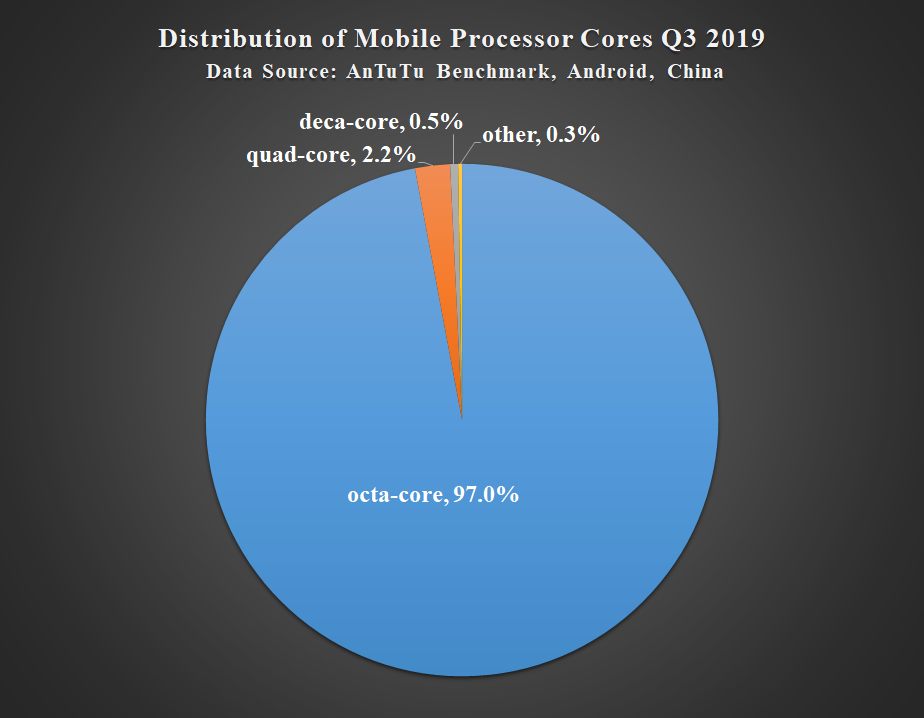
If there were any low-endor mid-range entry models with quad-core CPU a year ago, now the octa-core CPUis definitely the standard for Android smart phones domestically. You canhardly find a new Android phone equipped with non-octa-core CPU.
At present, octa-coreCPU is accounting for 97%, according to Antutu's statistics, which indicatesthat the time of octa-core CPU is truly coming.
On the both ends of thespectrum are the deca-core and quad-core CPUs, whichare basically found on old models that have not been updated yet, such asdevices with MediaTek's Helio X20 or Qualcomm's Snapdragon 800. Such devicescan still perform well, only if there were no high demand.
As Apple's A-seriesprocessors start to adopt multi-core architectures, the theory of futility ofmulti-core processors is diminishing on social media. There are facts alsoproving that the large, medium and small core architectures or large and smallcore architectures are indeed an excellent solution for Android phones in termsof performance and battery life.
RAM: 6/8GB – A RealTrend
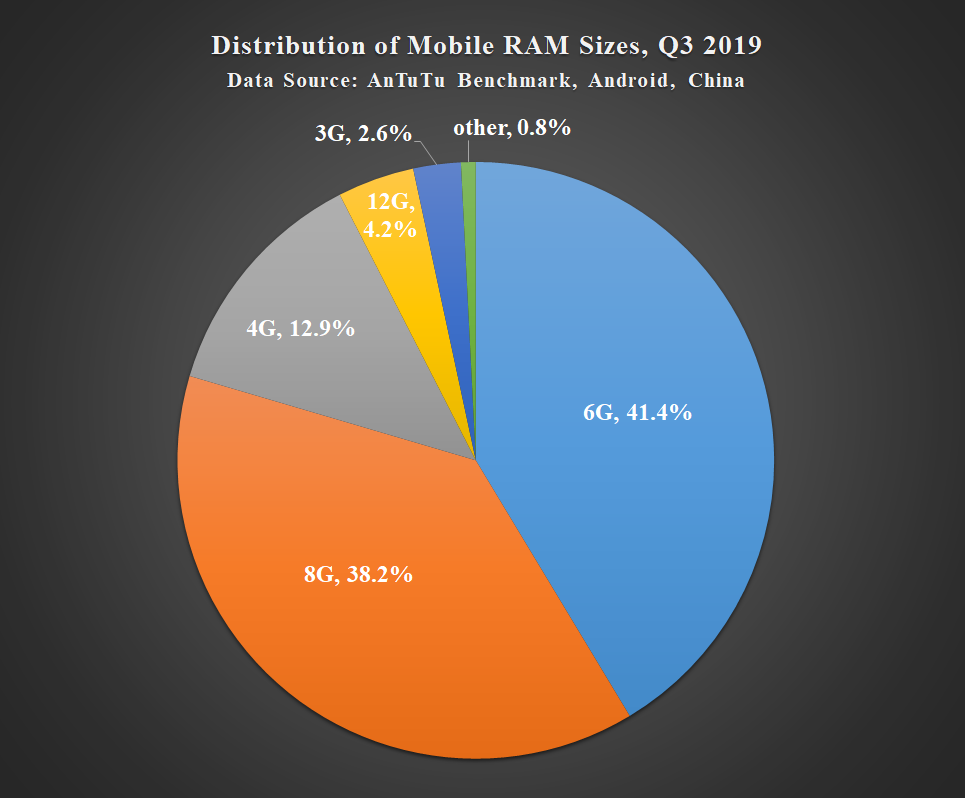
According to this RAM list,phones with 6GB or 8GB RAM are making the majority, which shows that mid-rangeand high-end models are more popular among Antutu's users. Otherwise, theproportion would have been lower.
Specifically, thepercentage of 6GB is 41.4% and 8GB is 38.2%. Together, the percentage is up to80%, making the absolute mainstream.
In addition, 4GB RAM accountsfor 12.9%, and 12GB RAM accounts for 4.2%. Such data indicate that theproportion of top flagship devices is even lower than that of low-end ormid-range models.
Historically, 8GB RAM onlyaccounted for 12% and 6GB RAM accounted for 34% in Q1, when 4GB RAM accountedfor as much as 24%.
On the other hand,although users welcome the top-of-the-line products with 12GB RAM, people optfor 6GB or 8GB RAM when making the order. After all, for most users, 6GB isenough for daily use while 8GB makes perfection more perfect. Though 12GB RAM hasa better 'testing score', it's practically less useful.
For today's mobilemarket, low-end entry-level products are basically equipped with 3/4GB RAM,while mid-range and high-end products are equipped with 6GB RAM, and someflagship products even start from 8GB RAM. Of course, it is good news to users,especially to users of low-end or mid-range products who have been longsuffered from the lack of memory.
ROM: Is 128GB a StandardConfiguration?
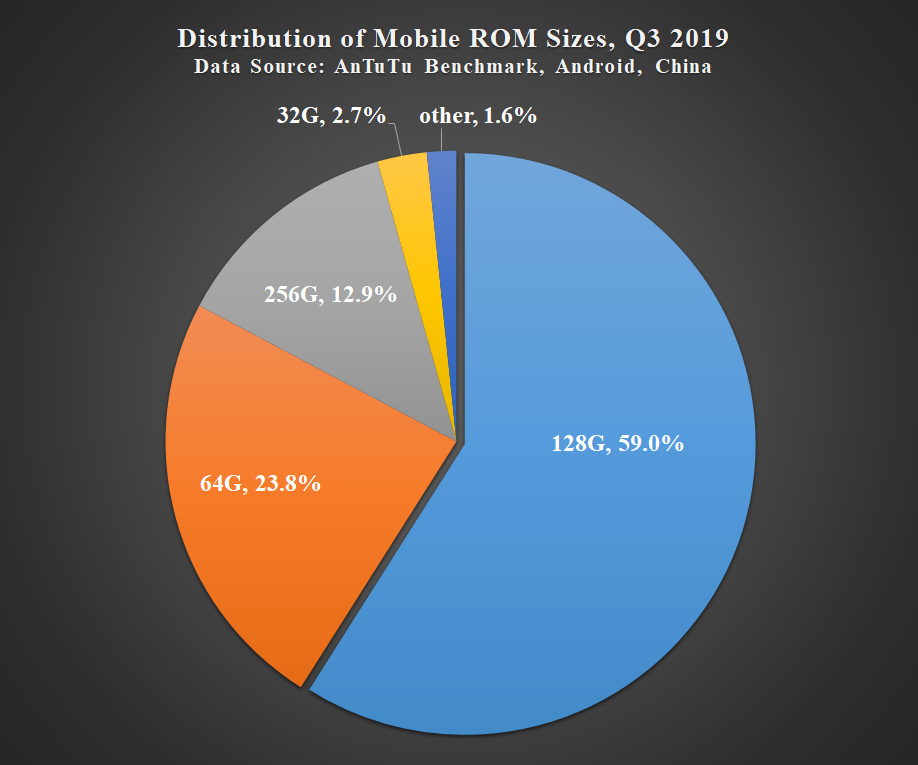
Among the users of Antutu,devices with 128GB ROM are dominating, with a percentage of 59%. Thishas to be credited to the high adoption of 128GB ROM by mobile phonemanufacturers in recent two years, as the 128GB ROM is the minimum for mostflagship devices and even becomes a standard for some mid-range models.
Historically, 128GB ROMaccounted for 30% while 64GB ROM accounted for 32% in Q1. Now, 128GB ROM hassuccessfully surpassed and becomes the definite mainstream.
As the phone resolutioncontinues to increase, the size of a single picture is increasing as well, fromhundreds KB in early days to several or even dozens MB nowadays. Additionally,more apps also mean higher demand for phone storage.
Based on currentsituation, 32GB ROM is not enough for most users, even 64GB is barely enough.Only 128GB or larger ROM can meet users' demand.
On the other hand, dueto the features of flash memory, the read/write speed is dramatically affectedwhen the storage capacity is nearly exhausted, which further affects the systemperformance. Therefore, Antutu also recommends our users to choose larger storage,especially for those who are less likely to replace their devices every year.
AndroidPhones: Fragmentation – An Insoluble Problem
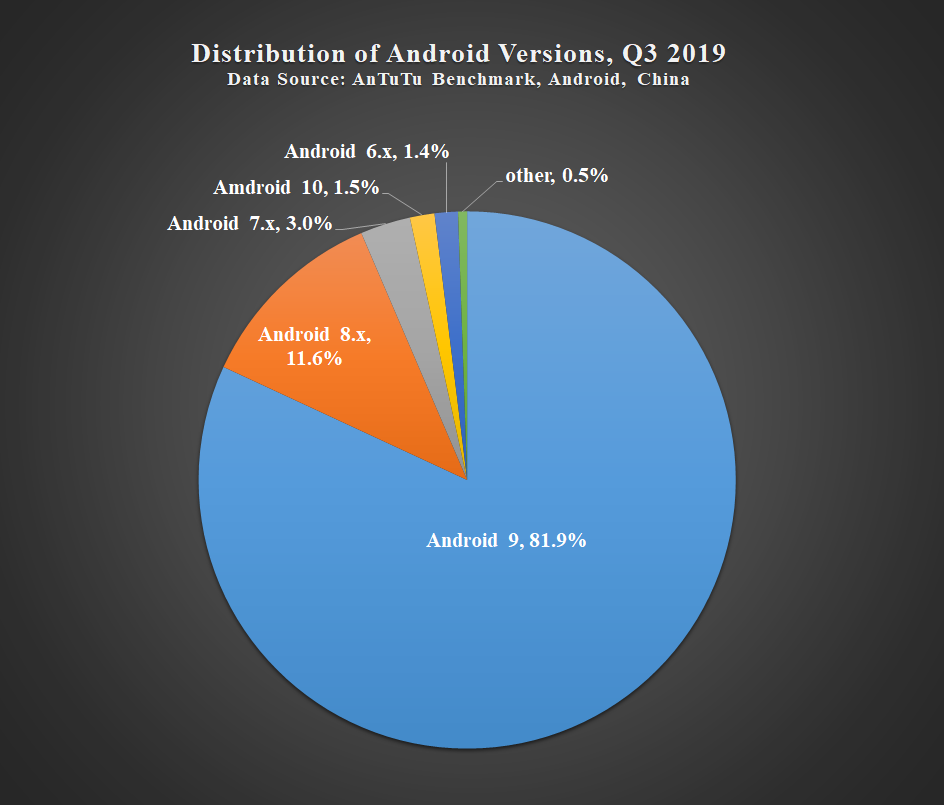
According to Google'sofficial data, Android 9 doesn't represent as much proportion as it does among Antutu'susers which has reached 81.9%. One main factor behind this is that most newmodels shipped by manufacturers in the past year are equipped with Android 9and many old models have been updated to Android 9.
Next to Android 9 isAndroid 8.1. It is undeniable that there are already some manufacturersadopting the "one-shot deal" approach on operating systems. It meansthat once the new model is launched, it will fix the bugs or introduce newfeatures only through system upgrade, which also means it is impossible toupgrade the Android version.
The latest OS versiondoesn't always guarantee the best performance, but manufacturers still have theresponsibility to upgrade the system, especially the Android OS version. Thisis the hidden demand beyond configuration and price. Antutu hopes that infuture, all devices developed by domestic phone makers will be able to enjoy1-2 years of system updates, especially at least one major update for Android OSversion.
Although Android 9accounts for a much higher proportion among Antutu's users, the fragmentationproblem is still prominent. Each version, ranging from Android 6 to Android 8,occupies about 1% share respectively, which also present challenges to thedevelopment of Antutu that you have to make sure the latest app is compatiblewith old Android versions.
The above is the interpretation on the preferencesof Antutu's users in Q3 of 2019. It needs to be noted again that this onlyrepresents the preferences of users of Antutu and it doesn't imply thedistribution of the whole Android market.

